Absolutely, the Azores is definitely worth visiting. Azores is located in the middle of the Atlantic Ocean. It is a hidden gem with stunning natural beauty, unique landscapes, and a tranquil environment that offers a perfect escape from the bustling city life. The islands are renowned for their lush greenery, dramatic volcanic landscapes, crystal-clear waters, and rich marine life. Whether you're an adventure seeker looking to explore the great outdoors or someone who wants to relax and soak up the serene atmosphere, the Azores provide a compelling destination that caters to a variety of interests and preferences.
Is Azores Worth Visiting for Tourists?
Yes, the Azores is absolutely worth visiting for tourists. Azores offers a spectacular blend of natural wonders, adventure activities, and cultural experiences that make it an ideal destination for travelers of all types. From the breathtaking views at the tops of volcanic craters to the warm, welcoming waters perfect for snorkeling and diving, the Azores has something to captivate everyone.
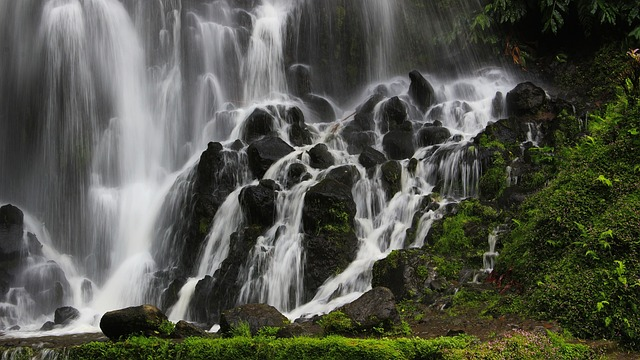
Tourists will find the Azores to be a haven for outdoor activities such as hiking, whale watching, and exploring geothermal springs. The islands are also steeped in rich history and culture, offering a chance to experience local cuisine and traditional celebrations that are both unique and memorable. With its mild climate year-round, the Azores provides an exceptional travel experience that combines relaxation with adventure in a stunningly beautiful setting.
What is the Best Time To Visit Azores?
The best time to visit the Azores is during the spring (April to June) and early fall (September to November). During these months, the weather is pleasant, and the islands are less crowded, allowing tourists to fully enjoy the natural beauty and outdoor activities. The springtime blooms and the mild autumn weather provide perfect conditions for exploring the islands' landscapes and wildlife.
Peak Season: Summer Months
The summer months, from June to August, are the peak tourist season in the Azores. During this time, you can enjoy the warmest weather, with average temperatures ranging from 22°C to 26°C. This season is perfect for:
-
Sunbathing and swimming in the natural pools and beaches.
-
Attending vibrant local festivals such as the Festas de São João.
-
Enjoying outdoor activities like hiking and kayaking in ideal weather conditions.
Shoulder Season: Spring and Fall
Spring (April to June ) and fall (September and November) are considered shoulder seasons in the Azores. These months offer a perfect balance with fewer tourists and pleasant weather, making it ideal for those looking to explore the islands' natural landscapes in peace. Activities during these months include:
-
Whale watching, as migratory patterns bring these majestic creatures closer to the islands.
-
Visiting botanical gardens and tea plantations in full bloom.
-
Hiking and bird watching, with moderate temperatures making long treks more comfortable.
Off-Peak Season: Winter
Winter, from November to March, is the off-peak season. While the weather is cooler and rainier, with temperatures ranging from 14°C to 17°C, it's an excellent time for:
-
Enjoying the dramatic, lush greenery enhanced by the rainy season.
-
Experiencing local culture with fewer tourists around.
-
Participating in indoor activities like visiting museums and historical sites.
What Things To Do In Azores?
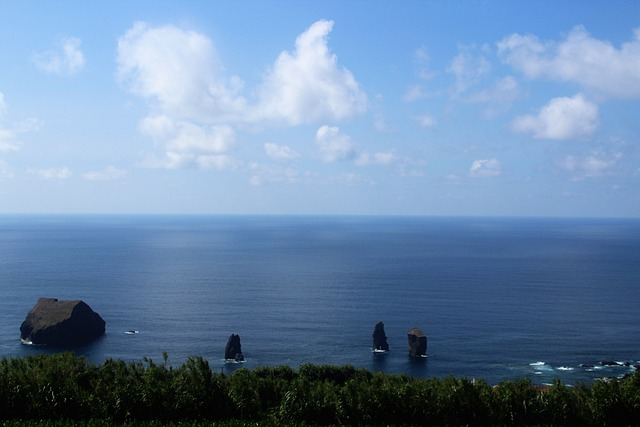
There are many interesting things to do in the Azores that include hiking, swimming, whale watching, diving, snorkeling, visiting hot springs, exploring volcanic landscapes, bird watching, sailing, surfing, fishing, kayaking, and cycling. Here are the in-depth details of all these activities.
Explore the Volcanic Landscapes
The Azores is renowned for its stunning volcanic features. Hike up to the crater of Mount Pico, the highest point in Portugal, for breathtaking views, or visit the Capelinhos Volcano on Faial Island, which last erupted in the 1950s. Exploring these volcanic landscapes offers not only spectacular scenery but also a unique insight into the geologic activity that formed these islands.
Dive into Marine Adventures
The waters around the Azores are teeming with marine life, making it a premier destination for snorkeling and scuba diving. Dive sites vary from sunken shipwrecks to vibrant coral reefs. You might encounter manta rays, dolphins, and even whales. The clear waters and abundant sea life offer an unforgettable underwater experience.
Enjoy Whale Watching
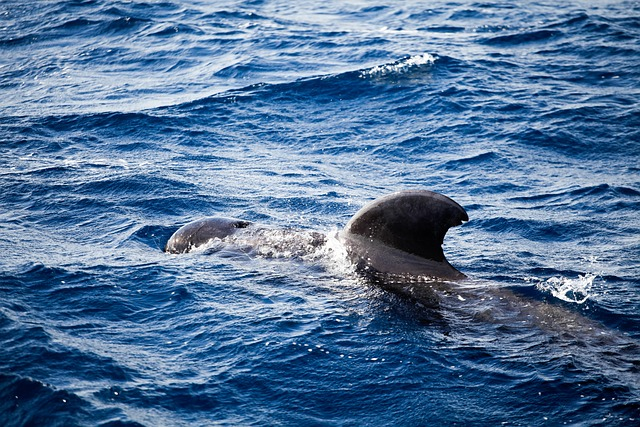
Whale watching is a must-do activity in the Azores, given its location on the migration routes of several whale species. Boat tours are available to see these majestic creatures up close, with common sightings including sperm whales, blue whales, and humpbacks. The experience of seeing these animals in their natural habitat is truly awe-inspiring.
Visit the Hot Springs and Geothermal Pools
Relax in the naturally heated pools found throughout the islands, a result of the Azores' volcanic origins. The most famous of these is the Terra Nostra Park on São Miguel Island, where you can bathe in a geothermal pool surrounded by lush botanical gardens.
Discover Local Flavors
The Azores offers a rich culinary scene that reflects its cultural heritage and geographic isolation. Taste the unique cheeses of São Jorge, or enjoy a traditional cozido, a meal cooked underground using volcanic steam. The local seafood, especially the tuna and limpets, is a must-try.
Hike Along Stunning Trails
With its varied landscapes, the Azores is a hiker's paradise. Trails range from easy walks along the coastline to challenging treks across mountainous terrain. The trails not only provide physical challenges but also offer some of the most stunning vistas found anywhere in the world.
Experience Island Festivals
Participate in local festivals to really immerse yourself in Azorean culture. Festivals like the Espírito Santo, celebrated with parades, traditional music, and communal feasts, offer tourists a chance to experience the Azores beyond its natural beauty.
How To Plan 7 Days Azores Itinerary?
As I set out on a captivating 7-day journey through the Azores, I was eager to experience everything these islands had to offer. This itinerary is designed to showcase the best of the Azores, from the lush landscapes of São Miguel to the volcanic vistas of Pico Island. Each day presented a new adventure, whether it was soaking in geothermal pools, hiking magnificent volcanoes, or whale watching in the deep blue waters. As I traversed from one island to another, I immersed myself in the rich culture and natural splendor of this unique destination, making each moment of my stay unforgettable.
Day 1: Explore São Miguel
Upon arrival in Ponta Delgada, the largest city on São Miguel Island, you can explore the charming streets, historical sites like the Church of São Sebastião, and enjoy local cuisine at waterfront restaurants. Spend some relaxing time along the coastal promenades preparing for the upcoming adventures on sao miguel island.
Day 2: Discover Furnas Valley
Discover the geothermal wonders of Furnas Valley. Bathe in the thermal pools at Terra Nostra Park, surrounded by lush botanical gardens. Enjoy a traditional cozido, a local stew cooked underground using volcanic steam.
Day 3: Experience Sete Cidades
Experience the breathtaking Sete Cidades, one of the Seven Natural Wonders of Portugal. Hike around the stunning blue and green lakes, and take in the views from Vista do Rei. Consider kayaking on the lake for a closer look at this majestic natural setting.
Day 4: Encounter Marine Life
Embark on a whale watching tour from Ponta Delgada, where you might see sperm whales, dolphins, and possibly even blue whales. Spend the rest of the day exploring more of Ponta Delgada, including museums and local craft shops.
Day 5: Visit Pico Island
Visit Pico Island, famous for its mountainous landscape and the imposing Mount Pico, Portugal’s highest peak. Tour the unique vineyards recognized as a UNESCO World Heritage Site and learn about volcanic wine production. Optionally, hike Mount Pico for exceptional views.
Day 6: Explore Faial Island
Explore Faial Island, the "Blue Island" due to its hydrangeas. Visit the Capelinhos Volcano, which last erupted in 1957-58, and wander through the Horta marina, adorned with murals by visiting sailors.
Day 7: Depart from São Miguel
Return to São Miguel for any last-minute sightseeing or shopping. Visit overlooked sites or relax at the beach before departing from Ponta Delgada, taking with you unforgettable memories of your Azorean adventure.
How To Plan Azores Trip?
When planning your Azores itinerary, the first step is to outline your budget and decide on the length of your stay. Consider the costs associated with flights, accommodation, local transportation, food, and activities like kayaking. To help manage your expenses effectively, create a checklist of anticipated costs:
-
Airfare (check for direct flights or those with minimal layovers)
-
Accommodation options (from luxury resorts to budget-friendly guesthouses)
-
Daily meals and local cuisine experiences
-
Transportation (rental cars, ferries between islands)
-
Activity fees (guided tours, equipment rentals)
Here’s a guide to help you organize your journey to this stunning archipelago.
1. Determine the Best Time to Visit
The Azores have a mild climate year-round, but the best time to visit is between April and October when the weather is warmer and drier. This period offers the best conditions for outdoor activities and exploring the islands.
2. Choose the Islands to Visit
The Azores consist of nine islands, each with its unique charm and attractions. São Miguel, the largest, is often called the “Green Island” and is a must-visit for first-timers. Pico is famous for its mountain and wine culture, Terceira for its historical towns, and Faial for the Capelinhos Volcano. Decide based on what activities and sights interest you the most.
3. Book Your Flights
Direct flights are available from Europe and North America to São Miguel and Terceira. From there, you can use local airlines to hop between islands. Booking in advance can help you secure better rates and more convenient flight schedules.
4.Itinerary Design
Designing an engaging itinerary is crucial for maximizing your time in the Azores. Start by identifying the must-visit islands and attractions based on your interests. If you enjoy outdoor activities, ensure to include islands like São Miguel for kayaking adventures and Pico for hiking.
5. Plan Your Accommodation
Options range from luxury hotels to cozy bed and breakfasts and vacation rentals. Stay in central locations to minimize travel time. Each island has its specialties, so choose based on where you plan to spend most of your time.
6. Rent a Car
Although public transportation is available, renting a car gives you the flexibility to explore at your own pace and access more remote areas. Most islands have rental agencies, and cars can be booked in advance online.
7. Pack Appropriately
The weather in the Azores can be unpredictable, so pack layers, waterproof clothing, and comfortable walking shoes. Don’t forget your swimwear, a camera, and any necessary adapters for electronic devices.
8. Prepare for Nature and Adventure
The Azores are known for their natural beauty and opportunities for adventure. Prepare to spend a lot of time outdoors, whether it’s hiking, swimming, or simply enjoying the stunning views.
9. Check Travel Requirements
Before traveling, check for any visa requirements, travel insurance needs, and health advisories. It’s also a good idea to familiarize yourself with local customs and regulations.
10.Booking and Reservations
Once your itinerary is set, proceed with booking your flights, accommodations, and any required reservations for activities, especially those that are popular like whale watching or guided kayaking tours. Consider booking through local travel agents or platforms that specialize in Azorean travel to get the best deals and insights. Additionally, ensure you check the cancellation policies and flexibility options, as weather conditions can sometimes change plans in the Azores.
By following these steps and organizing each aspect of your trip, you'll be well-prepared to enjoy the breathtaking beauty and unique experiences the Azores have to offer.
Where are the Azores Islands?
The Azores Islands are a group of nine volcanic islands located about 1,500 km west of Lisbon, Portugal's capital, and about 3,900 km east of the east coast of North America. This positioning in the North Atlantic Ocean makes the Azores a unique spot, bridging the gap between Europe and America. Each island boasts its own distinct personality, landscape, and charm, offering a diverse range of experiences for visitors.
This archipelago consists of nine volcanic islands. Each island has its unique charm and landscapes.
I was amazed to learn they're so remote yet accessible. The islands form a fascinating spot for adventure and relaxation. Their location makes them a perfect getaway from the mainland hustle. The Azores offer a blend of natural beauty and serene isolation.
How Many Islands Are There In Azores?
The Azores comprise nine major islands, which are divided into three groups: the Eastern Group (São Miguel and Santa Maria), the Central Group (Terceira, Graciosa, São Jorge, Pico, and Faial), and the Western Group (Flores and Corvo). Each island has its own unique attractions, from the stunning green landscapes and lakes of São Miguel to the wine culture of Pico and the historical significance of Terceira. These islands are part of Portugal. They're grouped into three main clusters: Eastern, Central, and Western.
I found it fascinating that each island has its personality. From São Miguel's lush landscapes to the vineyards of Pico, diversity abounds. These islands offer a wide range of experiences for travelers. The Azores is a unique archipelago, waiting to be explored.
São Miguel
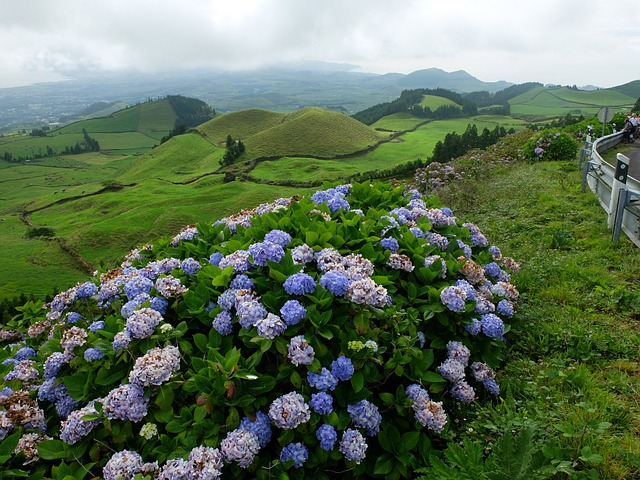
São Miguel, the largest and most populous island, is known as the "Green Island" because of its lush, verdant landscapes. Key attractions include the Sete Cidades and Furnas, with their beautiful lakes and hot springs. The famous crater lake, Lagoa do Fogo on São Miguel Island, is a stunning blue lake situated in a massive volcanic crater. Its pristine waters and surrounding high cliffs offer spectacular hiking opportunities and breathtaking vistas.
Santa Maria
Santa Maria, the southernmost island in the Azores, is distinguished by its warmer weather and the only sandy beaches in the archipelago, making it a favorite for sun-seekers and beach enthusiasts. The beaches, such as Praia Formosa, offer golden sands and clear waters, ideal for swimming and sunbathing. The island is also renowned for its vibrant festivals, including the annual "Festival of the Mare de Agosto," which draws music lovers from across the globe with its lively performances and festive atmosphere.
Santa Maria's colorful houses add a picturesque charm to the island, with their pastel hues reflecting the island's lively spirit. Visitors can explore historical sites like the Fort of São Brás, which provides insights into the island's past. The rural landscapes, dotted with traditional windmills and vineyards, offer peaceful retreats and opportunities for hiking and bird watching. Santa Maria's unique blend of natural beauty, cultural festivities, and historical depth provides a comprehensive Azorean experience in a compact and inviting setting.
Terceira
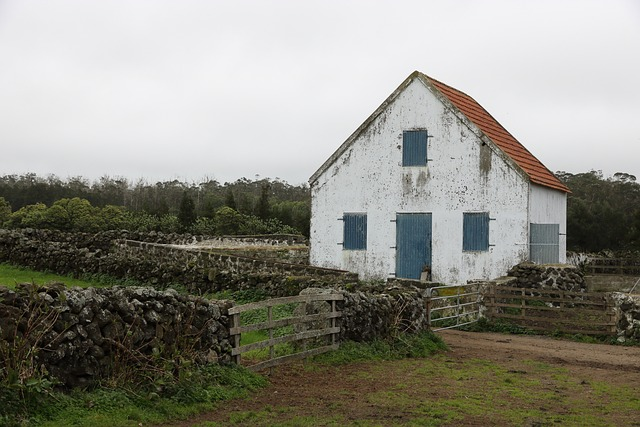
Terceira is known for its historical significance with Angra do Heroísmo, a UNESCO World Heritage Site. The island is also famous for its traditional bullfights and lively street festivals.
Graciosa
Graciosa, often referred to as the "White Island" due to its characteristic pale landscapes and houses, exudes a quiet charm that captivates visitors. It features unique attractions like the Furna do Enxofre, a large volcanic cave that is accessible via a winding staircase leading into its depths, offering an awe-inspiring view of an underground lake and sulfuric fumaroles.
The island's tranquility is complemented by its scenic windmills and vineyards, which produce distinctive wines. Graciosa's coastal areas are less crowded, providing a peaceful escape with beautiful views of the Atlantic. The thermal springs in Carapacho also offer therapeutic baths, popular with those seeking relaxation and wellness. With its serene environment and stunning natural features, Graciosa is a hidden gem within the Azores, perfect for those looking to explore away from the busier tourist spots.
São Jorge
São Jorge is known for its rugged terrain and the unique "fajãs" – flat coastal areas created by lava flows, which have become fertile grounds for diverse agriculture and offer spectacular hiking opportunities. The island is also renowned for its cheese production, particularly the São Jorge cheese, a spicy, hard cheese that is a favorite among connoisseurs.
These fajãs, often nestled at the cliffs' base, host small communities whose lifestyles are deeply intertwined with the natural environment, adding a rich cultural layer to the island’s allure. The combination of dramatic landscapes and traditional practices makes São Jorge a fascinating destination within the Azores.
Pico
Pico is named after Mount Pico, Portugal's highest mountain, which dominates the landscape. The island is famous for its wine culture, with vineyards that are a UNESCO World Heritage Site.
Faial
Faial is known as the "Blue Island" because of the vast hydrangea hedges that bloom in the summer. The Capelinhos Volcano, which erupted last in 1957-58, is a major attraction.
Flores
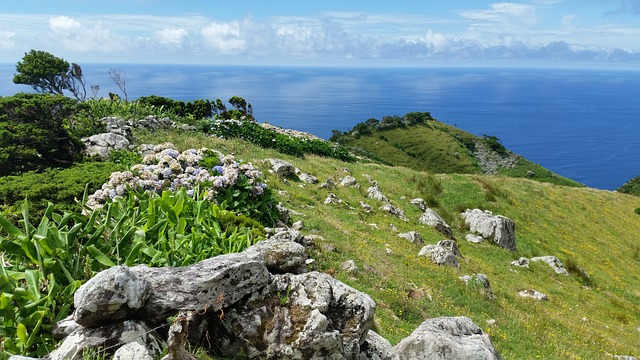
Flores, which means "flowers" in Portuguese, lives up to its name with lush, beautiful flora and stunning waterfalls. It is considered one of the most beautiful islands in the Western Group.
Corvo
Corvo, the smallest and northernmost island, has a population of around 400 people. It is famed for its large volcanic crater, Caldeirão, and as a haven for birdwatching, especially during the migration periods.
FAQs On Is Azores Worth Visiting?
1.How can I ensure my trip to the Azores is wonderful?
To have a wonderful trip to the Azores, plan to visit a mix of islands, engage in local cultural activities, enjoy the natural landscapes through hikes or tours, and indulge in the local cuisine, especially the seafood and cheeses.
2. Can I visit a tea plantation in the Azores?
Yes, the Azores is home to Europe's only tea plantations. You can visit and tour tea plantations on São Miguel Island, such as Gorreana and Porto Formoso, where you can learn about tea production and enjoy fresh Azorean tea amidst lush green fields.
3. Why is an island vacation in the Azores unique?
An island vacation in the Azores is unique due to the archipelago's volcanic origins, which offer dramatic landscapes, rich marine life, and a blend of Portuguese and local cultures. The tranquility and natural beauty of the islands provide a perfect escape from the hustle and bustle of mainland life.
4. How does the Azores connect with mainland Europe?
The Azores, while remote, have strong cultural and transportation links with mainland Europe, particularly Portugal. Regular flights connect the islands to major European cities, making the archipelago an accessible yet exotic European destination.
5. What is the allure of Lagoa Azul in the Azores?
Lagoa Azul, part of the Sete Cidades Crater on São Miguel, is a mesmerizing twin lake famed for its vivid blue waters contrasted against lush green landscapes. It's a popular spot for photography, canoeing, and hiking.
6. What hot spring experiences can tourists expect in the Azores?
Visitors can enjoy soaking in various hot springs known for their mineral-rich waters, which are believed to have healing properties. The most popular are located in Furnas on São Miguel Island, where the warm waters offer relaxation surrounded by exotic tropical foliage.
7. What hiking trails are recommended in the Azores?
The Azores offer diverse hiking trails suitable for all skill levels, from the easy waterfront paths to challenging mountain treks. Notable trails include those around the Caldera of Faial, the vineyard landscapes of Pico, and the mystical forests of Terceira.
8. What defines the Azores as a Portuguese archipelago?
The Azores define themselves as a Portuguese archipelago through their rich Portuguese heritage, language, and customs, blended with distinct local traditions and natural settings. This unique combination creates an enriching cultural experience for visitors.
